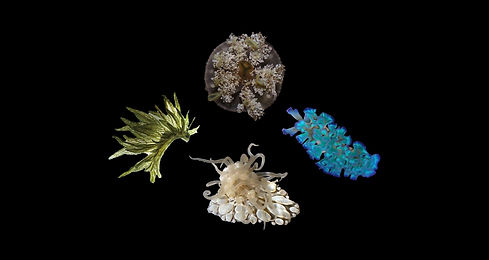The Evolution and ecophysiology of endosymbioses lab
current lines of research
solar-powered animals
in a changing climate
The ability to photosynthesize has advantages and disadvantages in a changing climate. We investigate these tradeoffs under a variety of different environmental conditions, to predict how these animals will fare in the warmer, more acidified and deoxygenated oceans of the future.
Photos: Ellie Laetz (left, top, bottom) and Laia Burgués Palau (right)


solar-powered Thieves
Some solar-powered slugs in the group Sacoglossa have acquired the ability to photosynthesize by stealing functional chloroplasts from the algae on which they feed. Some nudibranch sea slugs have also evolved the ability to photosynthesize by stealing algae from the cnidarians (sea anemones, corals and the like) that they eat. Nobody knows exactly how these slugs are able to retain symbiotic algae or chloroplasts but the E3 lab is trying to find out. We investigate the animals and their chloroplasts/algae using a variety of cellular, genetic and (bio)chemical approaches.
Photos: Can Kahyaoglu and Michiel Merkx
All about light
In this project, we examine how light governs photosynthetic function in solar-powered sea slugs. We are particularly interested in how slugs regulate the amount of light reaching their chloroplasts and what they do to mitigate the harmful effects of exposure to excess light.

How much light is this slug getting? How much photosynthesis can it do?
By measuring these animals in their underwater, we can understand how their environment shapes their ecology, evolution and development. Photo: Ellie Laetz

nutrient transfer between host and symbiont
We trace the products of photosynthesis from the symbiotic algae to the host animal. We also examine if/how the algae profits from this symbiosis and if this host actively provides these benefits.
Photo: Natascha Borgstein
New photosymbioses
Which animal species can retain algal symbionts and which ones cannot?
We are constantly on the lookout for new symbioses between animals and algae, and sometimes we find them!
If an animal has green or brown coloration, we will scan it to see if it contains algal symbionts.
Photo: Ellie Laetz

...and many more
We have lots of other projects and collaborations